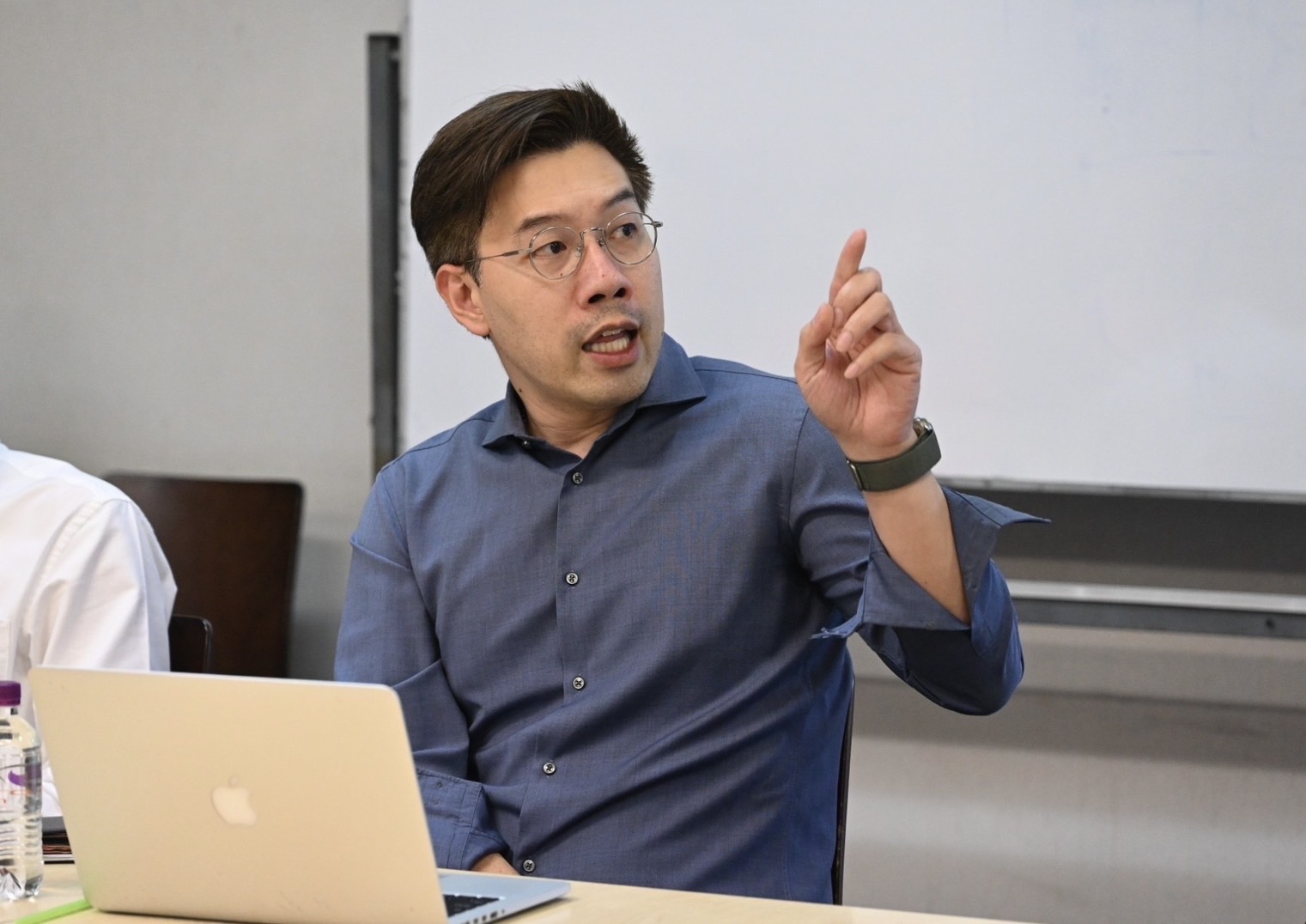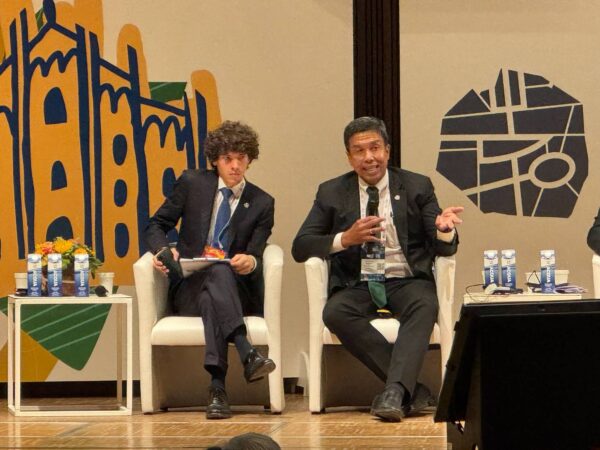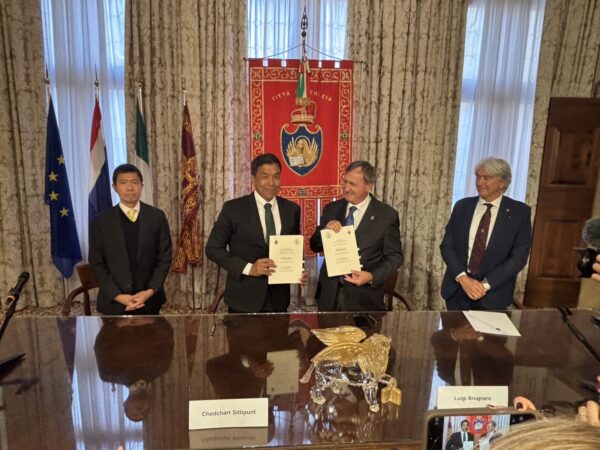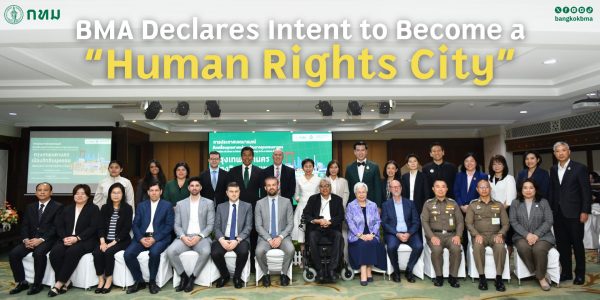
(January 25, 2025) Mr. Aekvarunyoo Amrapala, BMA spokesperson, addressed concerns regarding Bangkok’s response to the PM2.5 air pollution crisis. Critics claimed that the BMA was not utilizing its authority to declare health impact mitigation zones during periods of excessive PM2.5 levels. He clarified that district offices had previously issued such declarations in 2023 to mitigate public health risks. Once conditions improved, these declarations were revoked. In 2024–2025, various districts, including Nong Chok, Thawi Watthana, and Bangkok Yai, issued similar declarations and conducted public awareness campaigns.
The BMA’s Health Department developed guidelines for declaring Health Impact Mitigation Zones to address the health impacts of PM 2.5. These guidelines empower district offices to take legal action based on local conditions. The authority to declare such zones has been delegated to district directors under Order 1996/2562 issued by the Bangkok Governor on August 13, 2019. These declarations are made in accordance with Section 28/1 of the Public Health Act B.E. 2535 (1992), as amended in 2017.
The Health Department instructed all 50 district offices to declare Health Impact Mitigation Zones when PM2.5 levels exceed 75 micrograms per cubic meter for three consecutive days. These declarations must meet three key criteria:
- A clear and observable nuisance caused by PM2.5, impacting public health and violating legal standards.
- Multiple sources of PM2.5 emissions within the area.
- Significant health impacts or disruptions to residents’ quality of life across a wide area, evidenced by:
o Measurable PM2.5 levels exceeding 75 micrograms per cubic meter for three consecutive days.
o Epidemiological or risk assessments linking PM2.5 exposure to respiratory, cardiovascular, dermatological, or ocular diseases.
Steps for Declaring Health Impact Mitigation Zones
The process involves: - Gathering data on PM2.5 sources, affected areas, and health impacts.
- Analyzing and evaluating the situation to determine the need for a declaration.
- Issuing a declaration if all three criteria are met, or taking other legal actions if criteria are not met.
- Establishing prevention and mitigation measures for affected areas.
- Publicly announcing the declaration and notifying stakeholders.
- Monitoring compliance with the declaration.
- Revoking the declaration when conditions improve.
Preventative and Mitigation Measures
The declaration prohibits: - Diesel vehicles with excessive emissions from operating on roads.
- Open burning within declared areas.
- Construction activities that fail to implement dust control measures outlined in environmental impact assessments or permit conditions.
Violations are subject to penalties under Section 74 of the Public Health Act, including up to three months’ imprisonment, a fine of 25,000 THB, or both.
Comprehensive 365-Day Dust Reduction Plan
The BMA has implemented a “365-Day Dust Reduction Plan” designed to monitor, mitigate, and reduce air pollution caused by PM2.5 throughout the year. Key initiatives include:
- Monitoring and Alerts: Over 1,000 air quality sensors are deployed across Bangkok, and risk maps provide daily updates. Residents are issued alerts via Line and mobile apps.
- Pollution Source Reduction: Regular inspections of vehicle emissions, including buses and trucks; enforcement of stricter maintenance standards; and encouragement of electric vehicle (EV) adoption.
- Public Health Measures: Installation of air purifiers in schools, distribution of masks to vulnerable groups, and establishment of clean air zones in public spaces.
- Urban Greening: Planting one million trees citywide to filter pollutants and expanding bike lanes to reduce motor vehicle reliance.
- Community Involvement: Promoting citizen engagement through apps like Traffy Fondue, encouraging pollution reporting, and hosting educational campaigns.
Crisis-Phase Intensifications When PM2.5 levels escalate, additional measures are taken:
- Establishing a “War Room” for real-time monitoring.
- Increasing black smoke inspections to three times per week.
- Restricting construction and implementing a Low Emission Zone (LEZ).
- Enhancing public health support with mobile medical units and clinics.
Current Enforcement and Inspections
The BMA has been implementing the following 11 measures to enforce PM2.5 reduction policies: - Strictly monitor and inspect vehicles for black smoke emissions in collaboration with relevant agencies, following designated plans.
- Coordinate with local police stations to manage traffic and strictly always enforce a ban on parking along main and secondary roads.
- Raise public awareness about maintaining vehicle engines, turning off engines when parked, and reducing the use of personal vehicles.
- Regulate businesses, factories, cement plants, and construction sites to ensure air pollution emissions do not exceed the legal standards.
- Request cooperation from temples, foundations, and religious sites to refrain from burning incense and paper.
- Enforce strict monitoring and control to prevent any form of open burning or waste incineration in open areas.
- Increase the frequency of street cleaning, dust vacuuming, tree and leaf washing, and regular cleaning of bus stop shelters.
- Consider declaring Health Impact Mitigation Zones in Bangkok and strictly enforce regulations against violators.
- Conduct public awareness campaigns, providing information and health protection tips related to PM2.5, while urging residents to follow updates on PM2.5 levels through Bangkok’s various communication channels. Residents can report pollution sources via the Traffy Fondue app.
- Deploy mobile health units and medical services, including air pollution clinics, to safeguard public health.
- Implement strict PM2.5 reduction measures in schools to minimize health impacts on students.
Moreover, between October 1, 2022, and January 24, 2025, with pollution source inspections conducted twice per month, the BMA carried out extensive environmental inspections. A total of 14,604 industrial facilities were inspected, with 8 non-compliant out of 236 found, resulting in orders for improvements. Additionally, 2,437 cement plants were inspected, with 17 non-compliant out of 105 and corrective measures required. District authorities inspected 4,956 construction sites, identifying 33 non-compliant out of 231. The Department of Public Works inspected 5,762 construction sites, finding 1 out of 361 in violation. Lastly, 523 inspections were conducted at landfill and sand depot sites.
At emissions origin points, 3,680 vehicles were inspected, with 19 exceeding the standard limits. For black smoke emissions, 263,631 vehicles were checked, in 3,096 bans from operation. On January 24, 2025, 518 vehicles were inspected, with 13 banned. Furthermore, 56,638 public and private buses were inspected, leading to 145 bans, and 141,345 trucks were inspected, with 724 prohibited from operating due to emissions violations.
Dr. Wantanee Wattana, Permanent Secretary for the BMA, has instructed all departments to enforce these measures rigorously to mitigate the PM2.5 crisis and safeguard public health. The public is encouraged to report pollution sources via the Traffy Fondue app.
—————————




